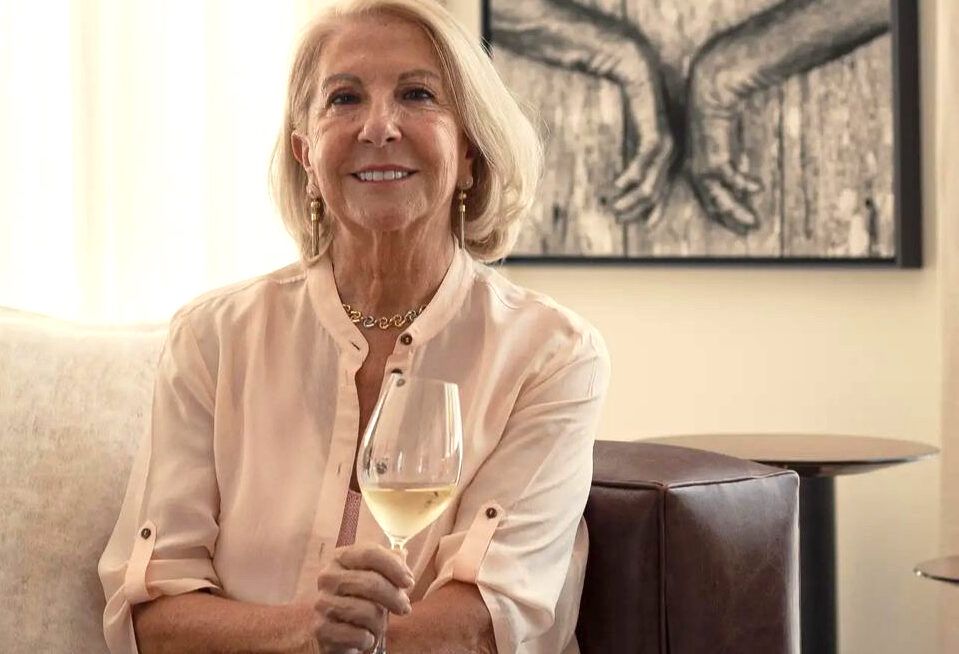Wine critic Joaquín Hidalgo summed up barrel-fermented Torrontés so accurately when he said it’s “Everything Torrontés wants to be when it grows up.”
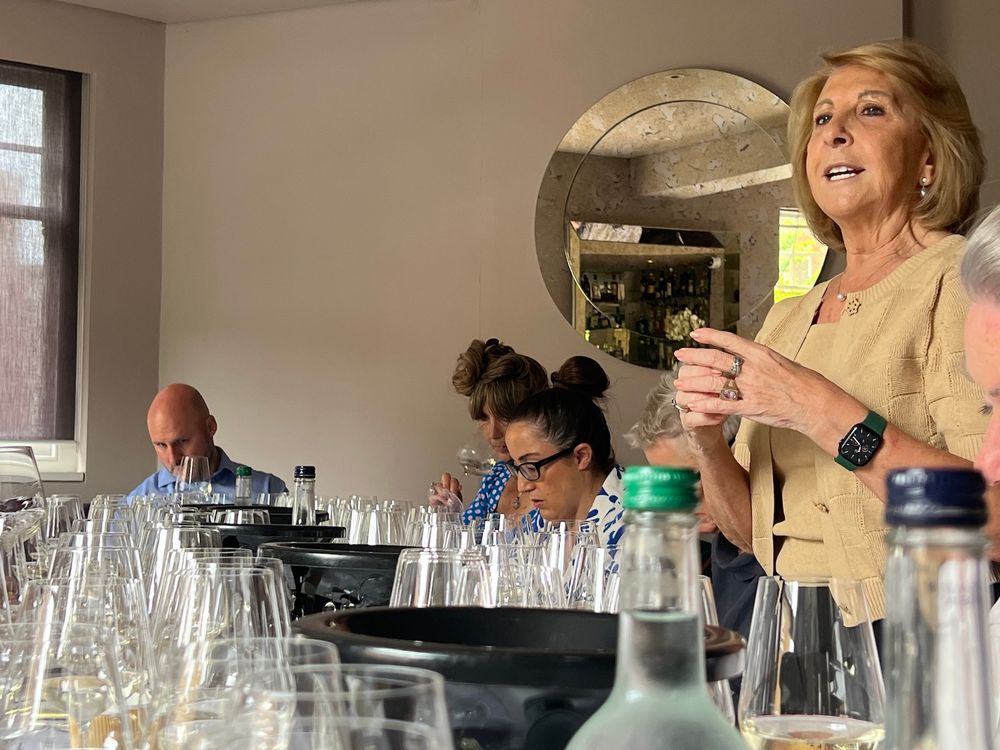
Susana Balbo: on a mission with her barrel-fermented Torrontés, London, June 23, 2023
Think of your entry level Torrontés and you don’t immediately think of fine wine. With a tutti-frutti nose that is reminiscent of Muscatel or Gewürtztraminer, its moderate acidity and rounded, easy-going mouthfeel, at best you would probably classify it as a quaffer to serve at a barbeque – the kind of wine that divides a room. But don’t let Susana Balbo hear you saying that.
The legendary Argentine winemaker is in London with a point to prove – that you can make fine wine out of Torrontés and that you should be able to call the grape a noble variety.
Armed with seven vintages of her Signature Barrel-Fermented Torrontés dating back to 2016 she has only set up this tasting because she was irked by some European wine journalists saying that you couldn’t call Torrontés a noble variety. Having tasted through the wines we have on display, they apparently changed their tune, she tells us with a smile.
The fact of the matter is that if it is not handled with skill, nor grown in the right terroir Torrontés will be a bulk wine that is meant to be drunk young. However, grow the grape at high altitude, preferably on sandy soil, and the acidity ratchets up a notch. Treat it with the attention it deserves, ageing it in wood and the results are very impressive indeed. In fact, if even a Master of Wine was blind-tasting some of these excellent Barrel-Fermented Torrontés wines that we have on the table I very much doubt they would ‘pin the tail on the donkey’ correctly.
They are Torrontés but Torrontés on an altogether higher plain.
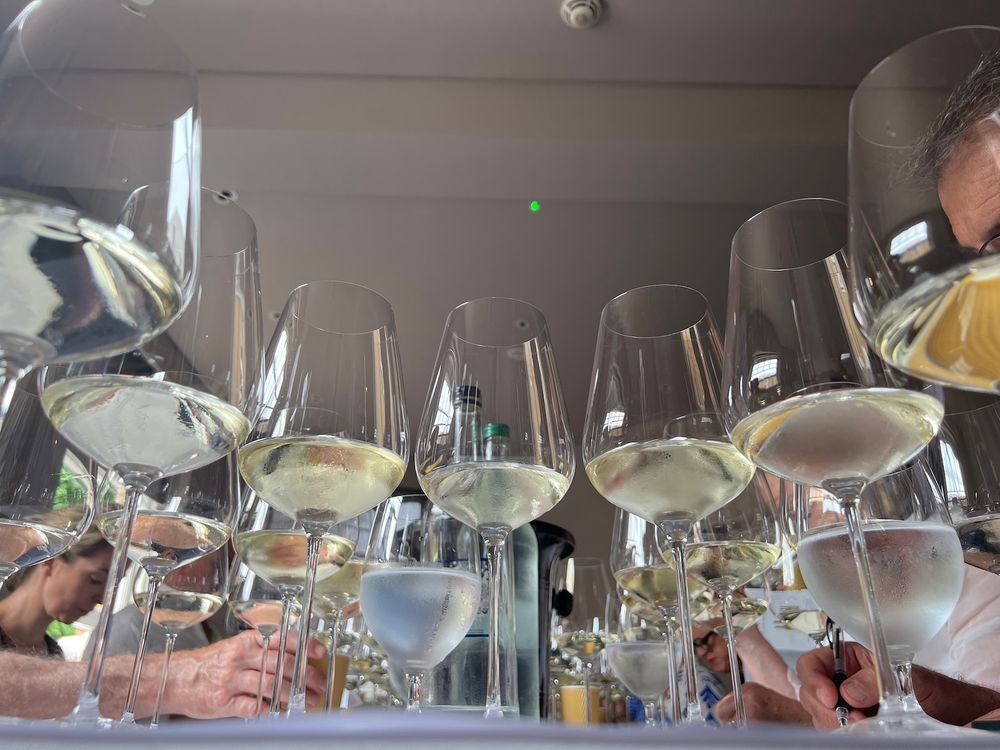
Seven vintages that would be fascinating in a blind tasting
Taking Torrontés to another level
Having given us a brief history of the grape and explained that Torrontés is not indigenous but the result of crossing with Mission grapes during the Catholic exploration of the New World, Balbo explains what she does to make Torrontés a fine wine – employing a rarely-used technique of ‘toasting’ oak barrels with hot air.
In terms of the fruit’s origin, Balbo planted the vines in Paraje Altamira in the Valle de Uco in 2005, 128km south of Mendoza and 1,150 metres up. The soil here is very poor in organic matter but has great drainage and is suitable for high density planting. The cooler climate and high diurnal range leads to higher acidity and less tropical fruit notes in the finished wine, which has a more sublime and elegant bouquet with floral and herbal (rosemary) notes becoming apparent.
Vinification wise the wines Balbo shows were made more or less made the same way – de-stemmed fruit, cooled down to 6°C, macerated with dry ice for two hours, pressed at low temperature, fined with 100% fermentation in new French oak barrels. Prior to 2020 the fruit was macerated for six hours with less pressing. Since, and including, 2021 the wines are aged for six months in 100% new French 500l oak barrels with a weekly battonage to move the lees. Prior to then the ageing was four months with no battonage.
Interestingly another key change has been the wood use and its treatment. In 2013 Balbo changed to 100% new French oak to avoid any more bitter flavours that Torrontés has in spades naturally. Following a meeting at the Australian Wine Institute, where it was demonstrated, she also introduced ‘toasting’ her barrels using hot air at 190-210°C which gives a much cleaner flavour profile than traditional toasting.
“It is much cleaner for the wine,” she explains, “it takes longer, about four hours but you can more accurately go for the flavours you’re looking for. When you put the wine in the barrels you also don’t feel the oak, it works fantastic, and gives the wine a chance to evolve over the years.”
Wine critic Joaquín Hidalgo summed up barrel-fermented Torrontés so accurately when he said it’s “Everything Torrontés wants to be when he grows up.”
So how were the wines tasting?
In a word, fantastically. We tasted from current vintage, the 2022 back to the 2016. Overall, the tutti-fruity Torrontés character dissipated with time, there was increased complexity, the oak-derived texture became less noticeable and more integrated and the wines did indeed display an elegance and sophistication one associates with fine wine. Interestingly, even though 100% new oak is used throughout, at no point did the oak mask the aromas or the flavours in the wine. The screwcaps also help preserve the freshness of the wine.
We tasted from most recent to aged.
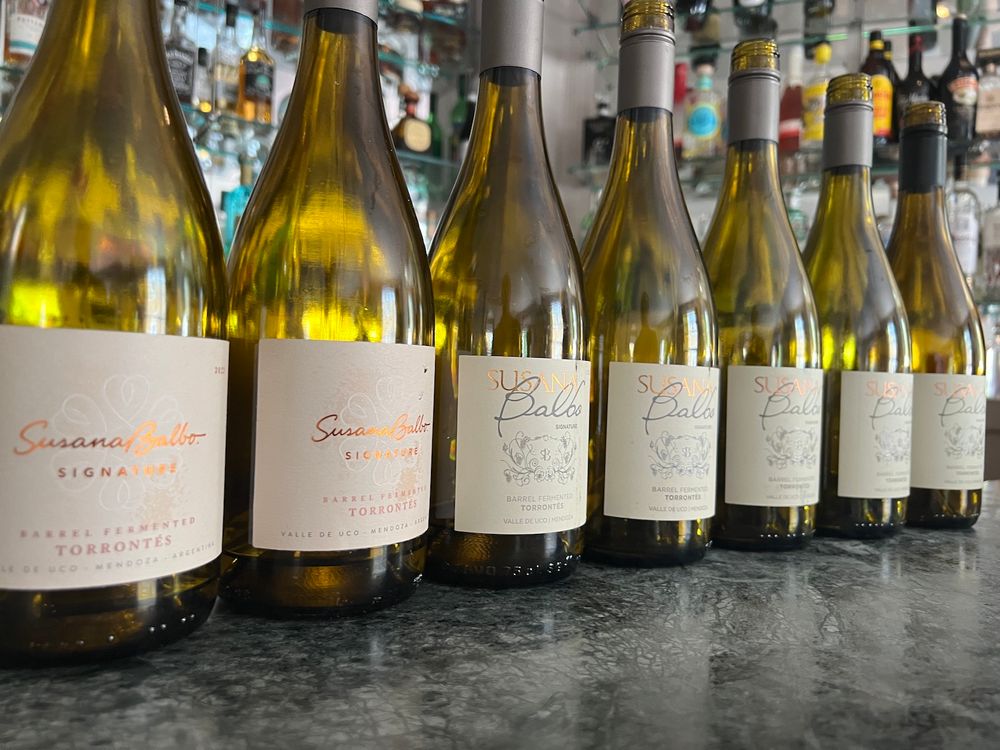
Susana Balbo Signature Barrel-Fermented Torrontés 2022
The one vintage that really had those familiar, heightened, tutti-frutti aromatics – sweet, herbal (rosemary), quietly intense. In the mouth there was some breadth and richness here but a fine and rather wonderful fine-grained texture. Grapefruit skin, nice sophistication. After tasting the older vintages the fruitiness and floral perfume was more pronounced
Susana Balbo Signature Barrel-Fermented Torrontés 2021
From a very cold, humid and difficult vintage this was easily my least favourite of the seven vintages – if it hadn’t been screwcap I would have questioned whether it had some sort of closure taint or not. The vineyards suffered a lot of frost and the alcohol ended up being 11.5% abv when the other vintages clocked in around the 13% abv mark. Dumb nose with no characteristic tutti-frutti notes. In the mouth the acidity felt keener, even though it had the lowest acidity out of the range – perhaps it was a lack of ripe fruit? – the citrus flavours were sharper. One to avoid.
Susana Balbo Signature Barrel-Fermented Torrontés 2020
From a warm and dry vintage this displayed a greater finesse. The nose had an attractive herbal and smoky nose, on the palate the wine was more rounded than the 2021 with delicious bitter, lime flesh notes.
Susana Balbo Signature Barrel-Fermented Torrontés 2019
A classic, fine vintage and one of the wines that was really shining in the line-up. Beautiful fruity nose with orange skin. In the mouth the wine had greenage, grapefruit pith and a lovely balance between precise, crisp acidity and a roundness to the fruit. Impressive length and great gastronomic potential.
Susana Balbo Signature Barrel-Fermented Torrontés 2018
Another real favourite vintage of the tasting – the fruit is still fresh but evolved more with greater layers. Fresh and fruity, the mouthfeel was balanced and less angular, great texture, with other flavours creeping in, such as almond skin. More depth, tangy, really outstanding.
Susana Balbo Signature Barrel-Fermented Torrontés 2017
This is a fine wine make no mistake and would fox many a Master of Wine in a blind tasting. It’s also really easy to drink! The aromatics have gone up a notch in their complexity with a savoury, yeasty edge. On the palate I was getting a bit of nuttiness, orange pith, an almost umami quality. The acidity is still there but nicely poised, the texture is fine-grained – this is a wine that feels well and truly at ease with itself.
Susana Balbo Signature Barrel-Fermented Torrontés 2016
With the 2018 and 2019 this was a standout wine in the line-up and, could by itself, prove Balbo’s point that Torrontés is a ‘noble grape’. The fruity nose in this instance feels very true to the variety, but there is more subtlety here – it is Torrontés… but not as we know it. The acidity here takes even more of a back seat, the wine being more rounded and balanced in the mouth – there is a higher level of finesse and elegance, more complexity in the range of flavours; citrus being the dominant fruit type but there is more variety here – zest, pith, flesh, cooked fruit; the wood-ageing adds a lovely fine-grained texture.
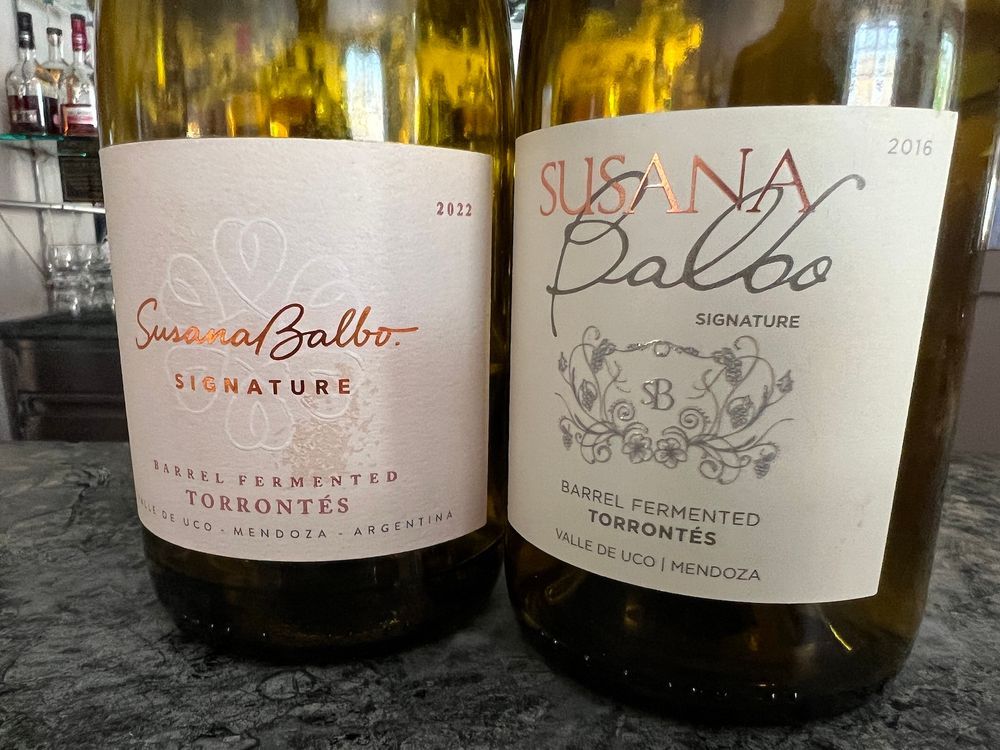
How the labels have changed
And finally….
Although Susana Balbo only produces about 4,000 cases out of her total output of around 300,000 bottles, this wine is well worth seeking out and squirreling away. The wine pairs well with spicy food, Asian and Thai. Currently 50% of the export goes to the US although the Far East is waking up to the potential of Barrel-Fermented Torrontés. Another reason Balbo gave for showing the wines in the UK after a Netherlands tasting is the willingness of the UK customer to experiment and discover new styles of wine.
“You are one of the most explorer consumers. After more than 20 years working in the wine industry I have always really admired how people here taste new things – consumers here are really explorers – they don’t think they have to just drink Chardonnay.”
- Susana Balbo’s Barrel-Fermented Torrontés are imported and sold in the UK by Enotria&Coe for trade and Great Wine Company for retail. Enotria&Coe is a commercial partner of The Buyer. To find out more click here.
